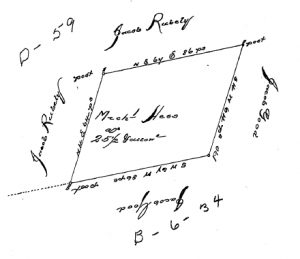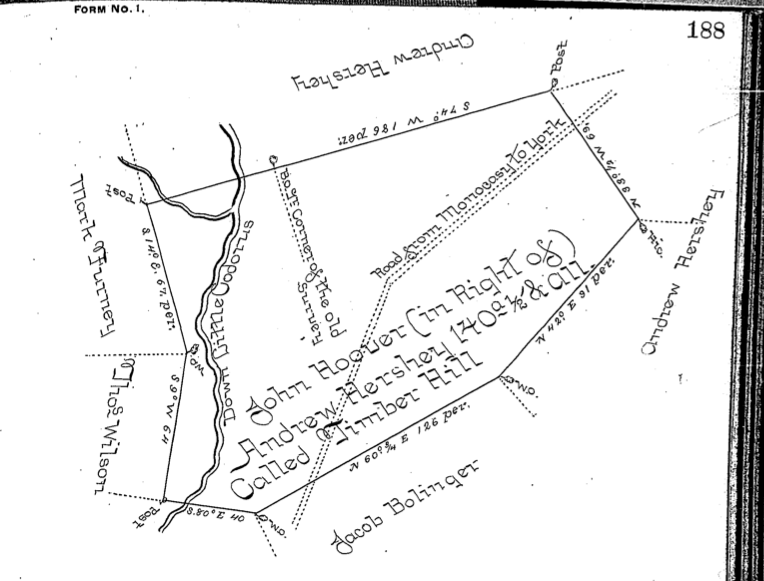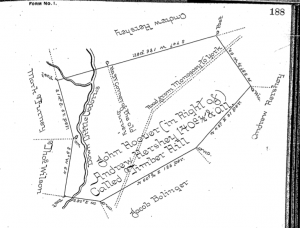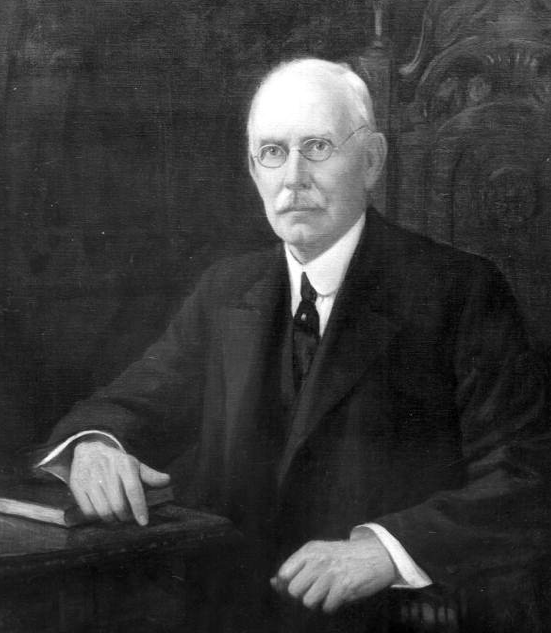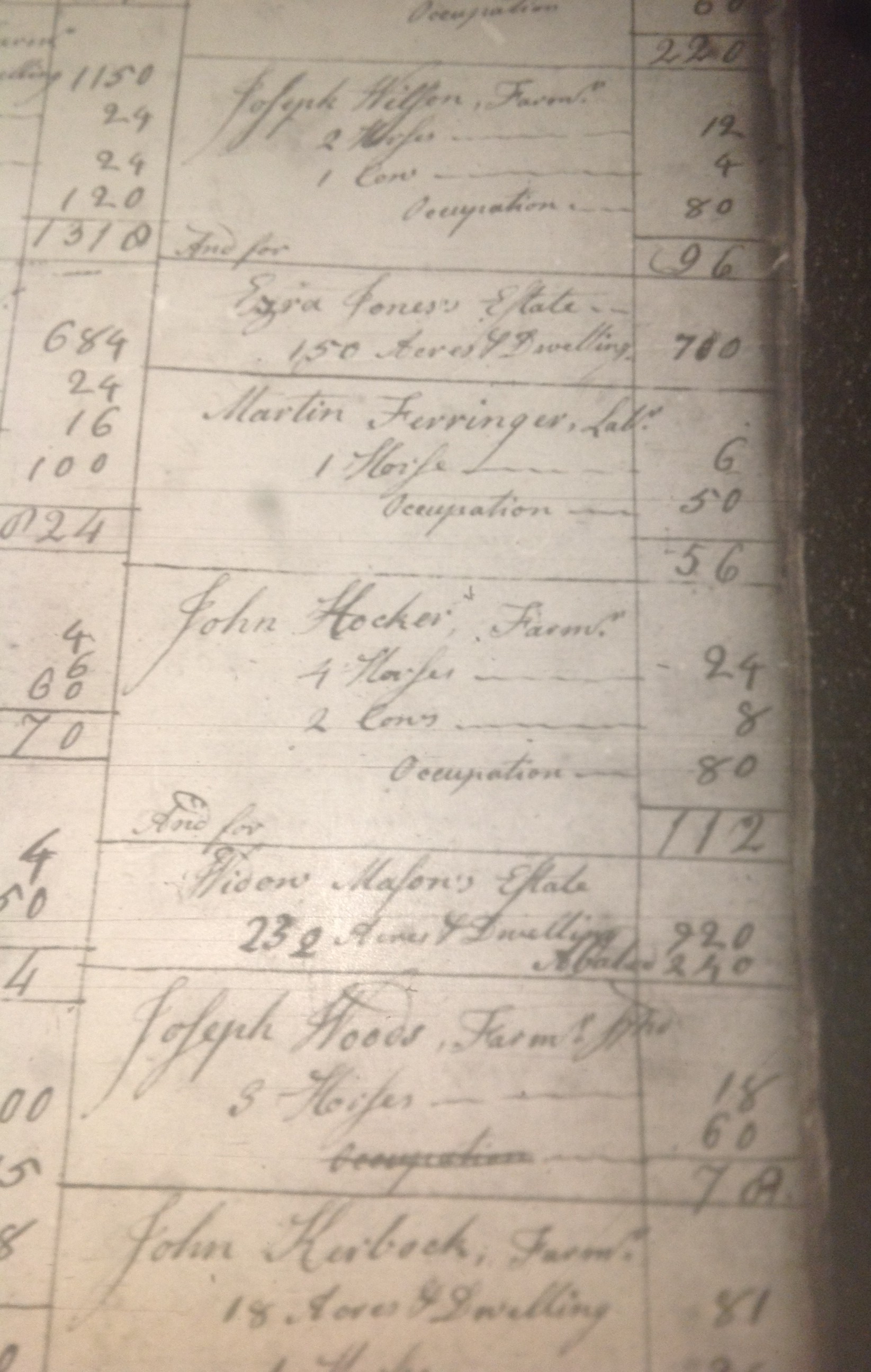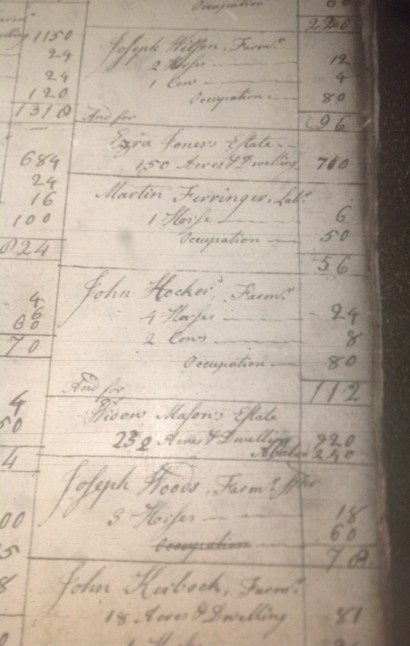George and Elizabeth (Hassler) Hocker
If you’re familiar with William O. Wingeard’s A German-American Hacker-Hocker Genealogy, you might have read the chapter on George Hocker (Frederick4, Johan Adam3, Christoph2, Stephen1). In it Bill freely admits that he had trouble continuing the family line from George and his wife Elizabeth. I’m not afraid to admit that he’s causing me some consternation, too.
George Hocker, son of Frederick and Catharina (Fuchs) Hacker, was born in Cocalico Township, Lancaster County, Pennsylvania most likely sometime between 1785 and 1790. He was most likely one of the males under 16 years of age in Frederick Hocker’s 1790 census entry and the male 10-16 in Frederick’s 1800 census entry.1 When Frederick died intestate in 1812, his two eldest sons, John and George, were administrators of his estate. The eldest son John renounced his option to take his father’s real estate on 12 April 1812 and the Orphans Court awarded it to the next son George.2
George purchased 26 perches of additional land in Cocalico Township on 11 August 1812.3 On 1 April 1813, George and his wife Elizabeth sold this 26 perches to Jacob Studenroth.4 On 13 May 1813, George sold 150 acres of land formerly of his father’s estate to Michael & Jacob Stine.5 George of Cocalico Township, Lancaster County purchased 177 ¼ acres in Lower Paxton Township, Dauphin County from Andrew Fahnestock on 26 March 1814.6 George and his wife Elizabeth sold 16 acres of land in Lower Paxton Township, formerly of Andrew Fahnestock, on 4 July 1814 to George Firestone.7
So, a few years after his father’s death, George sold the family farm and moved his family to Dauphin County, Pennsylvania. George Hocker appears in the 1813 tax list for Lower Paxton Township, Dauphin County.8 Susquehanna Township was formed in 1815 from part of Lower Paxton Township, and George is listed in tax records there from about 1816 through 1830.9
This provides a general location for the family during the years they would have had children. But who were their children?
Wingeard lists their children as Peter, George Jr. and Christina, but provides no sources for this information. I found several baptisms for children of George and Elizabeth Hocker in Zion Lutheran Church in Harrisburg and Shoop’s Reformed Church in Dauphin County. They included:
- Catharine, born 11 May 1814, baptized 10 July 181410
- Sara, born 10 October 1817, baptized 12 December 181711
- Andrew, born 18 September 1819, baptized 26 December 181912
- Daniel, born 10 April 1821, baptized 22 July 182113
- Eli, born 25 August 1823, baptized 29 February 182414
I believe I found George Hocker in Upper Swatara Township—which adjoins Susquehanna Township—in the 1830 census.15 The household included:
- 2 males 5 to 10 (Daniel, Eli)
- 1 male 10 to 15 (Andrew)
- 1 male 20 to 30 (George or Peter?)
- 1 male 30 to 40 (?)
- 1 male 40 to 50 (George Sr.)
- 1 female < 10 (?)
- 2 females 10 to 15 (Sarah, Catharina)
- 1 female 15 to 20 (?)
- 1 female 40 to 50 (Elizabeth)
Based on this census, it would appear that George and Elizabeth may have had a son, born ca 1800-1810, and a daughter, born circa 1810-1825, in addition to the children listed in the baptismal records. While there may have been older children who were married and no longer at home, the male aged 30-40 is too old to have been a child of this couple. I haven’t been able to find this family in the 1810 or 1820 census records and I think, but am not sure, that they may have been back in Lancaster County in 1840. After that, I have no clues—no census, tax, death or estate records.
I’ve traced the family of Daniel Hocker and have marriage information for his sister Sara and brother Andrew. This information will be included in A Hacker-Hocker Family. It was not in A German-American Hacker-Hocker Genealogy. I also have information on George [Jr.] and Peter Hocker, but am in doubt about whether or not they belong to this family—they may belong to George’s uncle, Johan George Hacker and his wife Christina Miller.
I may also have to chase down the possibility that George had a son named John. The 1827-1830 tax lists for Susquehanna Township show, not only George Hocker, but also a single man named John Hocker. He would have been born circa 1806 (or maybe earlier), but would not have married prior to 1830. In 1830, both George and John’s names are crossed off the tax list, with a notation of “Pottsgrove” for George Hocker. Did they leave for Northumberland County? I’ve also noted entries for a single man George Jr. in 1828, 1832 and 1833 with the 1833 entry crossed off and “gone” written in. If these are all members of the same family—father and sons—then they all left Susquehanna Township by 1830 and 1833.
The consistency of entries for George Hocker in the Susquehanna tax records from 1816 through 1830, the 1813 Lower Paxton Township tax entry, and the 1814 land purchase in Lower Paxton—most likely in a portion that became part of Susquehanna Township in 1815—point to Frederick’s son George Hocker. What happened to him after 1830? And what was his relationship to the John and George Jr. in the Susquehanna Township tax records? These are questions I’ll be trying to answer. Stay tuned.




